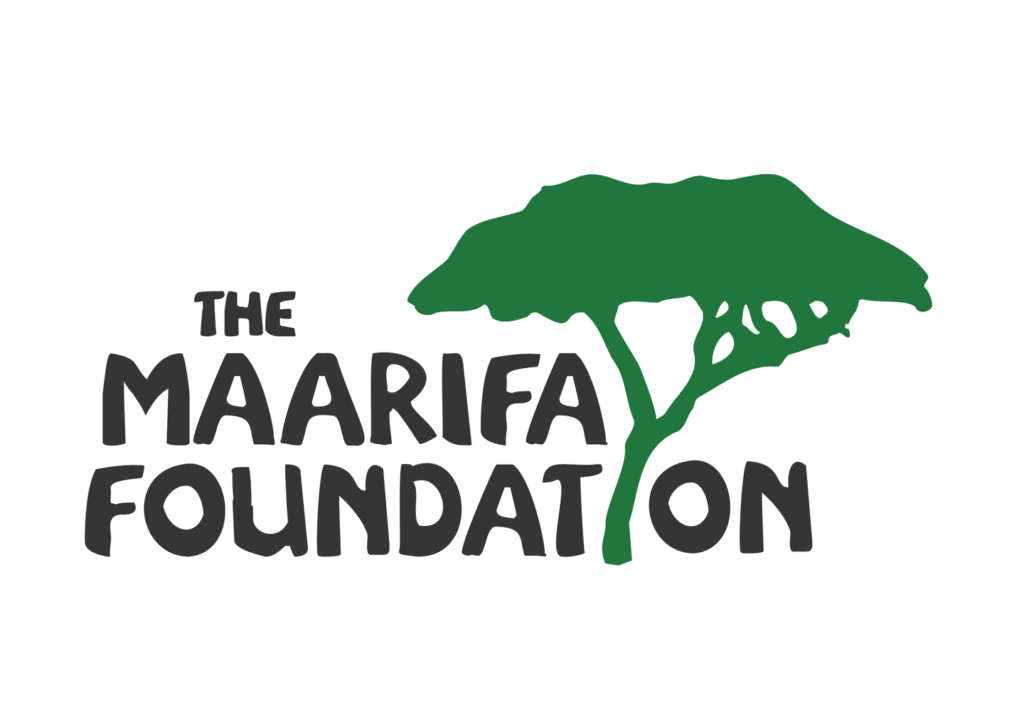Are you ready to be a Koala Champion?
Why do we need to be Koala Champions?
In many parts of Australia, koala populations have decreased significantly, and are now listed as Endangered in Queensland, New South Wales, and the Australian Capital Territory. The four main threats to koalas are:
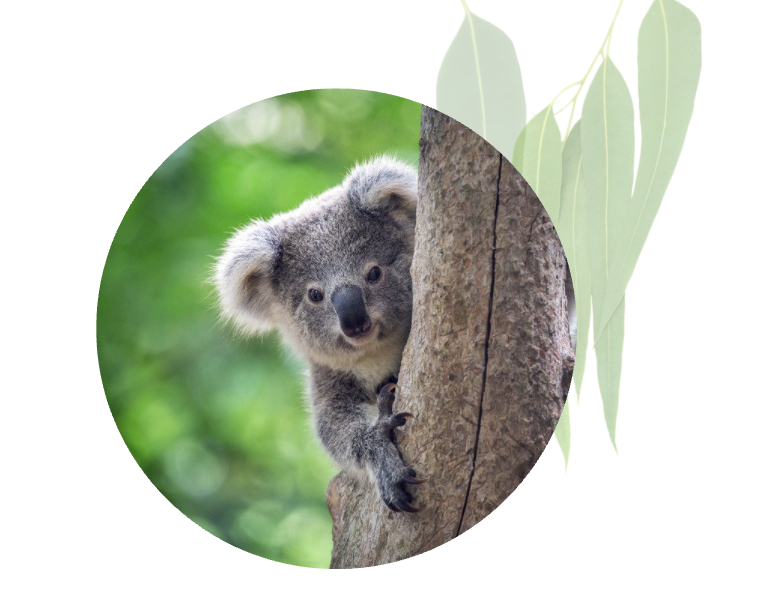
- habitat loss
- disease
- vehicle-strike
- dog attack
Disease, vehicle-strike and dog attacks are a symptom of habitat loss. As we reduce modify and fragment their habitats, koalas have to move more to find adequate food, shelter and mates – and this means crossing roads and moving through backyards. With koalas squeezed into smaller pockets of habitat, koalas are stressed, which increases their susceptibility to disease, and it is easier for infectious diseases (like Chlamydia) to spread.
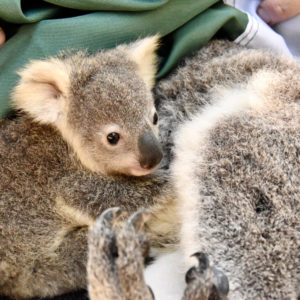
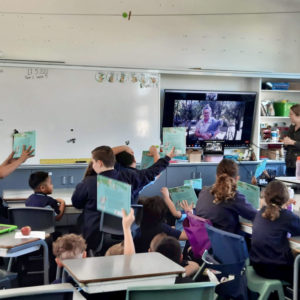
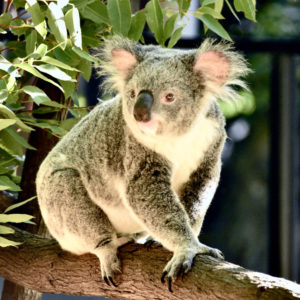
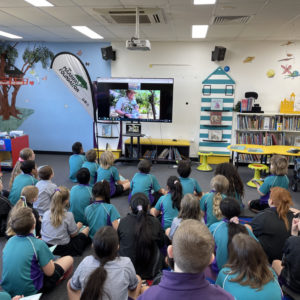
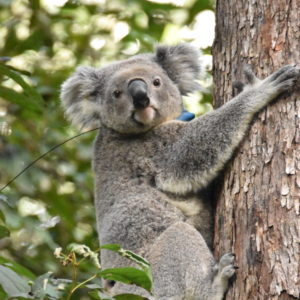
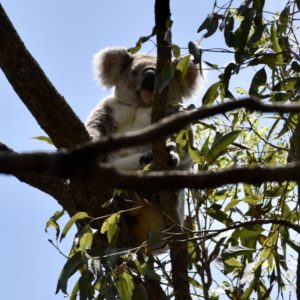
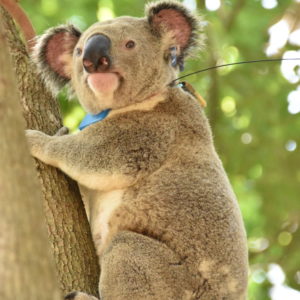
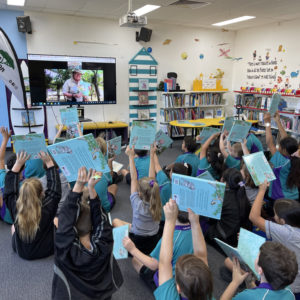
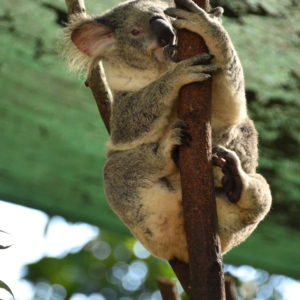
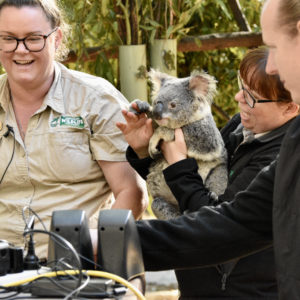
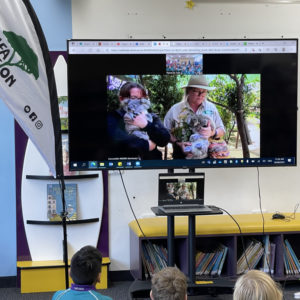
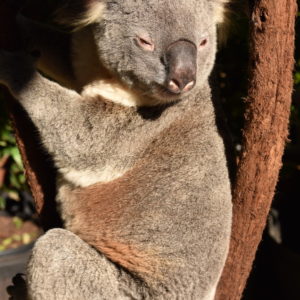
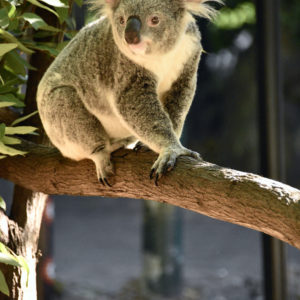
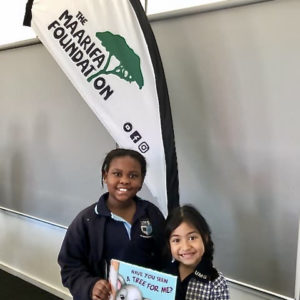
Here are a few simple things we can all do to help
Koalas live over a range of woodland and open forest communities but their habitat is defined by the occurrence of a select number of preferred food trees (and these can vary between regions).
People mistakenly think that koalas are only found in large bushland reserves and National Parks. However, increasingly, smaller habitat patches in urban areas are also very important. Individual trees found in backyards, street trees, and small stands of trees in our urban parks are also significant as these provide shelter and refuge as koalas move through the urban landscapes. For the future of koalas, every tree counts!
Koalas are quite fussy eaters and each individual has quite a restricted diet. Many people mistakenly believe they only eat eucalyptus leaves, however their diet can include other species like Melaleuca (tea tree), Lophostemon (brush box) Corymbia, Angophora and more. And almost any tree species may provide shelter and refuge, including camphor laurels and cheese trees. Over 120 different species of trees have been recorded as a source of food and shelter for koalas, but these can vary throughout their range and from one individual to the next. If you are planning to plant trees for koalas, the best is to plant locally native tree species! You can ask your local Council for a list of species endemic to your particular area.
Why did the koala cross the road?
Contrary to popular belief, koalas don’t just sleep all day. They do come down to the ground and move from tree to tree regularly, to find new territory, to find mates, or when they are disturbed. They also don’t just live in large bushland areas – they live in urban areas too. As a result koalas need to cross roads, and this can be very dangerous! Koalas are much more active during the breeding season, which is between July to February, with a peak in October and November. So being extra aware while driving particularly during these months, can save a life – or two.
Wildlife Movement Solutions (or WMS) is the collective term for infrastructure that assists the safe movement of wildlife through the landscape. WMS for koalas is an essential component in urban areas where koalas are known to occur. Koala fencing, escape poles, fauna underpasses and overpasses, interactive wildlife signs, refuge poles and climb-outs are all examples of WMS. As a community it is our duty to demand that these types of structures are incorporated into new and existing roads where they are needed. Write to your local, state and federal elected officials and make your voices heard!
Click here to learn more
Have koalas visited your backyard before? Or maybe you live in a koala habitat zone. If so, there are a few things you can do to ensure they have a safe visit. It can be as simple as leaning a wooden pole up against your fence to allow for an easy escape or placing a float in the pool to prevent drowning, or if you have a dog-free backyard allow koalas to move freely through it with fauna-friendly fencing and plant new native trees. For some more easy ideas, click here
If you are a dog owner, this section is especially important to you. One of the reasons why koalas are on the decline is due to dog attacks. Dogs often defend their territory from ‘intruders’. As koalas move through the landscape to find food, habitat and mates, often they need to move through backyards – where unfortunately they can meet dogs! Walking your dog without a leash, especially in bushland, is also a recipe for disaster for any koala that may be moving along the ground. Being a responsible dog owner means being responsible with how you manage and with how you train your dog. For example, restrain your dog at night (eg indoors, in a kennel or in a small section of your yard) so koalas can freely and safely pass through your backyard; keep your dog on leash and under your full control when walking in the bush, and desensitise your dog to wildlife (through specialised training). Check out these links to find out more about dogs and koalas:
If you see a sick, injured or orphaned koala, please always call for help.
Here are some of the things you should look for:
- sitting on the ground for more than a couple of minutes
- sitting low in a tree and not trying to escape or climb further up the tree as it sees you
- wet and dirty looking bottom (a sign of disease)
- inflamed or infected eyes (also a sign of disease)
- appear to have a physical injury or seen hit by a vehicle (even if the koala moves off the road, it likely has serious internal injuries)
- a joey that is alone (it may have lost its mother to car-strike or dog attack, but is too small to survive on its own)
- a koala in imminent danger such as sitting in the centre median strip, caught on the wrong side of a fence, inside a dog park or backyard with unrestrained dog.
Here are the key contact numbers for your State.
QLD – RSPCA Native Animal Ambulance 1300 ANIMAL (1300 264 625)
NSW – WIRES 1300 094 737
VIC – Click here and enter suburb details for a full list of local rescue organisations
SA – Fauna Rescue Koala Hotline 1300 KOALAS (1300562 527)
Koala care and rescue groups are always looking for volunteers. Why not take the time to contact your local group and find out how you can help. Here are some ideas of where help might be needed:
- assist with rescues
- manning phones
- transporting animals to and from wildlife hospitals
- volunteering at wildlife hospitals
- donating towels, blankets or home-sewn ‘pouches’ for orphan wildlife
- financial assistance/donations
Now that you are a Koala Champion…
Are you ready to be Koala Smart?
Koala Smart WebsiteKoala Smart is a FREE project-based learning resource for teachers and students.
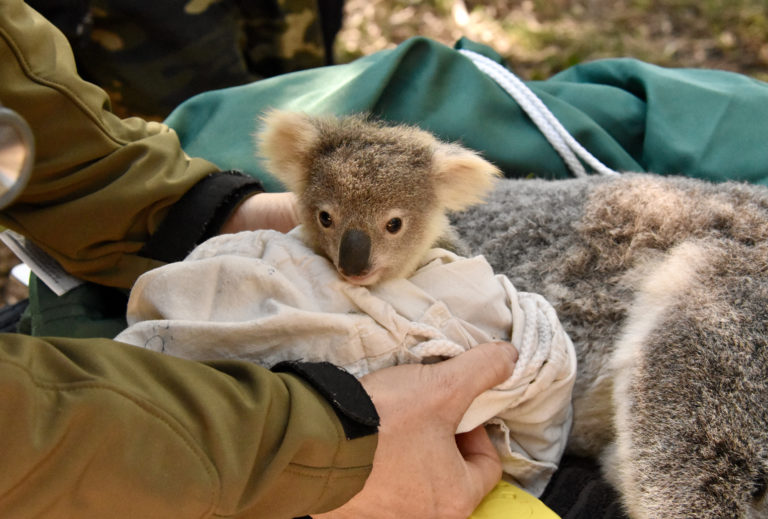
Mapped to the curriculum, Koala Smart steps you through a Design Thinking or Inquiry unit so that students can be active in koala conservation and see their ideas evolve into real-world appreciation.
Classroom-ready content and supporting resources are factual and current and designed to inspire, motivate and educate students.
